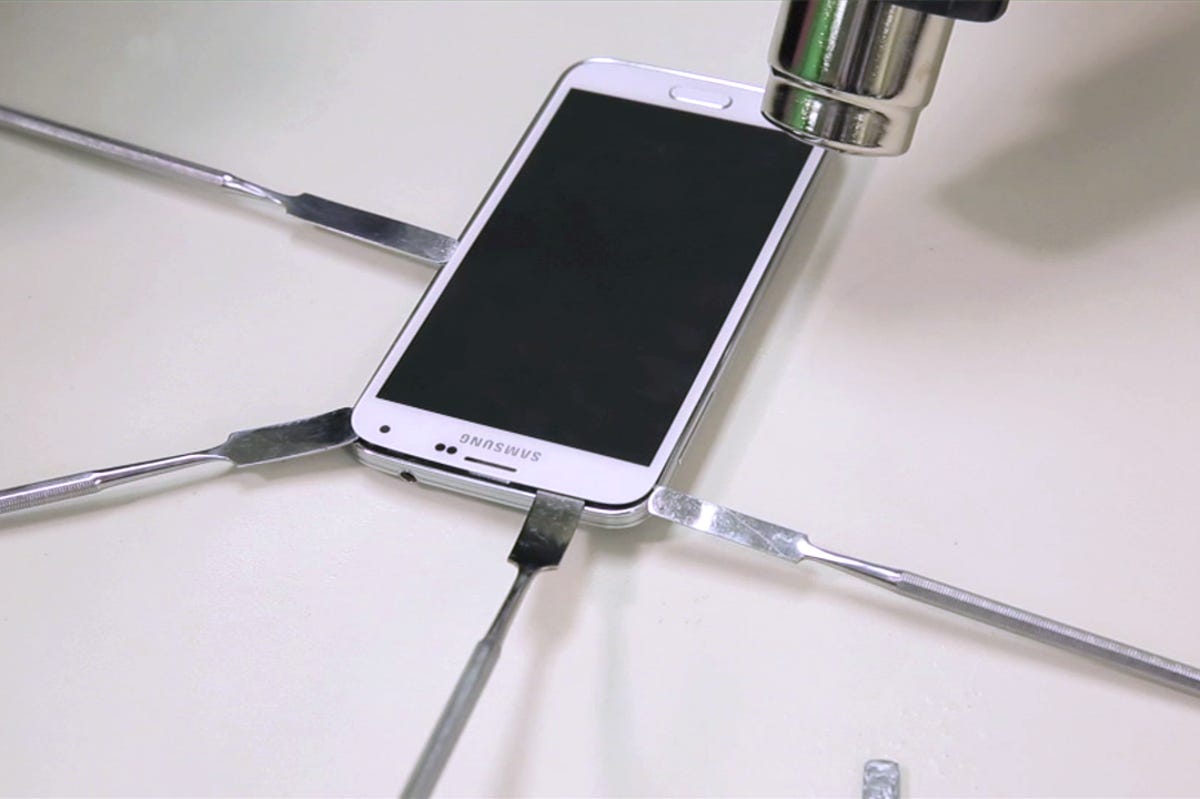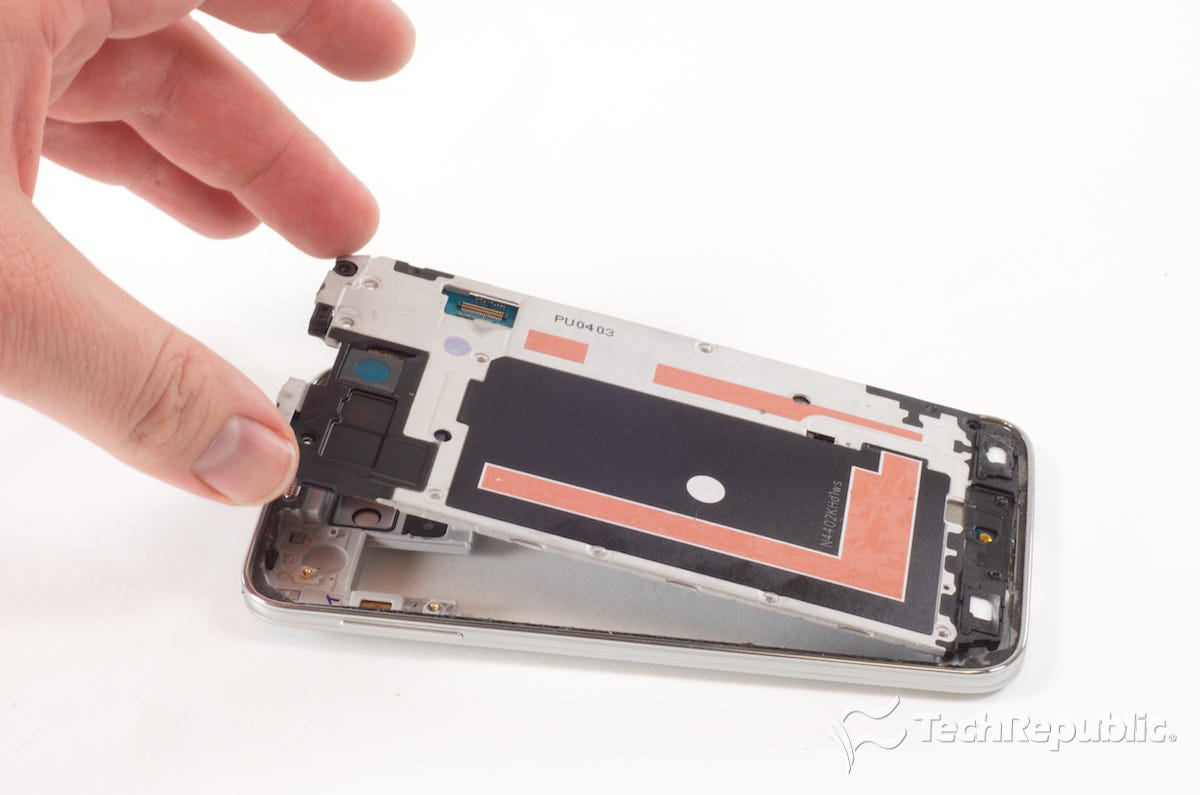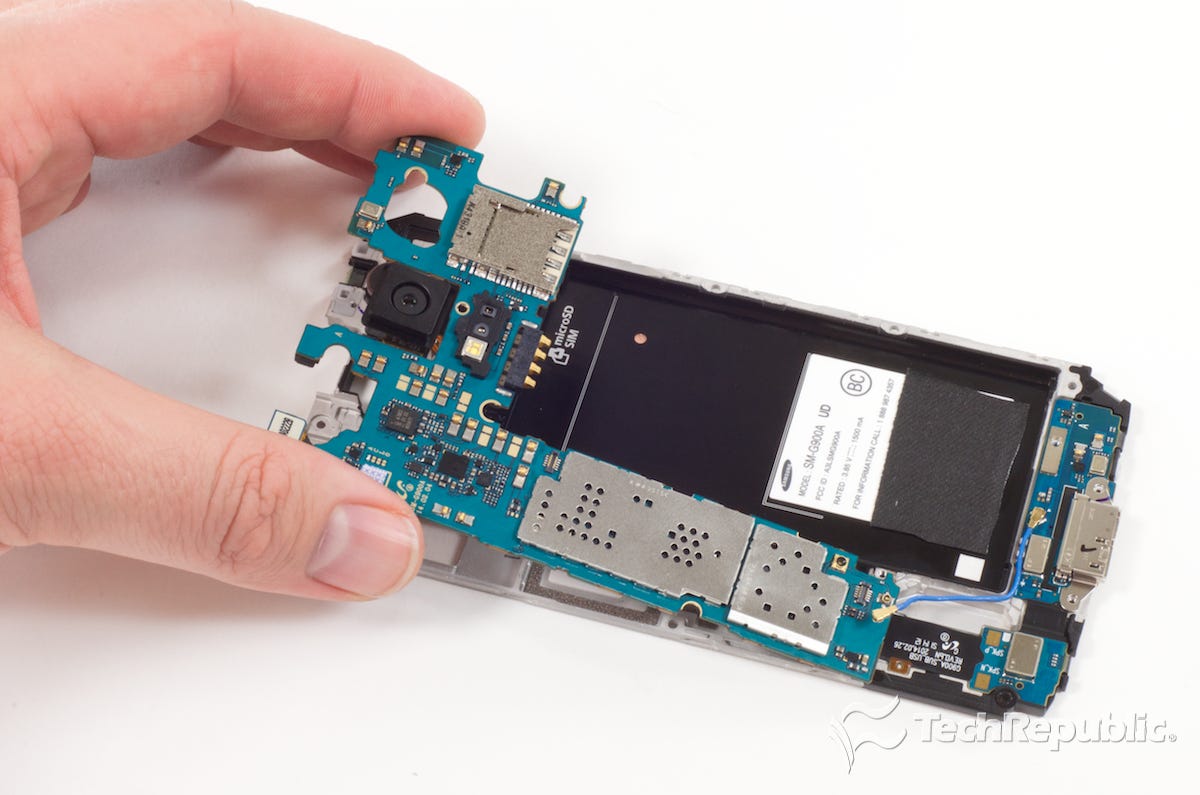

Now playing:
Watch this:
Cracking Open: Samsung Galaxy S5
4:43
Samsung’s Galaxy S5 may not look all that different from the Galaxy S4 on the outside, but on the side it’s a completely different animal. There’s lots of hardware upgrades, a redesigned interior, and a whole new way to open the case and replace a broken screen.
The S5 is slightly larger and heavier than last year’s S4, but I doubt many buyers will notice the difference. What they will likely notice is the hardware. Our AT&T model with LTE has a quad-core 2.5 GHz Snapdragon 801 SoC from Qualcomm. On models without LTE, Samsung uses its own Exynos 5422 SoC. All versions have a 5.1-inch 1080p HD AMOLED display, 2GB of RAM, 16GB of built-in storage, a microSD card slot, a 16-megapixel rear-facing camera, 2-megapixel front-facing camera, NFC support, IR blaster, and a brand-new fingerprint sensor.
For a complete list of the Galaxy S5’s specs, real-world call tests, and an extensive look at the user interface, check out the full CNET review .
The S5 also has an Ingress Protection (IP) rating of 67. This is the same rating given the Galaxy S4 Active, which Brian Tong and I torture tested at CES this year. And it means the phone provides complete dust protection and limited water protection.
Cracking open observations

Bill Detwiler/TechRepublic
- New way to open the case: Unlike the Galaxy S4 or S4 Active, opening the S5 requires a completely different process. On the S4 and S4 Active, once you removed the battery cover and battery, all that stood between you and the phones’ innards was a second, internal plastic cover, which was held on with screws and a few snaps. Opening the S5, however, requires that you go in through the front — first removing the display and front panel assembly, which is held in place with adhesive.
- Completely redesigned interior: Once you do get inside the S5, you’ll find an interior the likes of which I’ve never seen in a modern smartphone. Behind the front panel and display assembly is an internal plate. The motherboard and most other internal components are mounted to this plate and sandwiched between it and the internal cover. The motherboard, lower IO board, cameras, and most other components have also been redesigned or swapped out for new versions.


Bill Detwiler/TechRepublic
- Hardware upgrades: In addition to a new Snapdragon 801 SoC, the S5 has a slightly larger screen, upgraded cameras, higher-capacity battery, and new fingerprint sensor.
- Easy to replace front panel/display: The front panel and display assembly can be replaced without removing any other internal components, or even any screws, for that matter. The assembly is held to the frame with adhesive, which makes it a bit difficult to remove without breaking it. But as you’re not likely to remove the panel and display assembly unless it’s already broken, this shouldn’t be a limitation for most people.


Bill Detwiler/TechRepublic
More difficult to crack open, easier to repair
So why did Samsung dramatically change the phone’s internal design? I contacted the company for an official response, but didn’t hear back as of publication. So, I’m left to speculate.
I doubt it has anything to do with the Ingress Protection rating, as the IP67-rated S4 Active was built like the original S4 and not the S5. Instead, I suspect it has to do with durability and repairability.
It may sound counterintuitive that making the phone more complicated to open would make it easier to repair, but in the S5’s case it actually does. Opening the S4’s case and removing the motherboard and other internal components was remarkably easy. But because the front panel and display were basically fused to the internal frame, it was difficult to replace a cracked screen. On the S5, however, replacing a broken screen is extremely simple, even with the adhesive.
Having cracked open or tested every Galaxy S model, I continue to be impressed by the engineering effort Samsung puts into its phones. I just wish it put the same effort into giving its phones a more elegant and innovative design.



